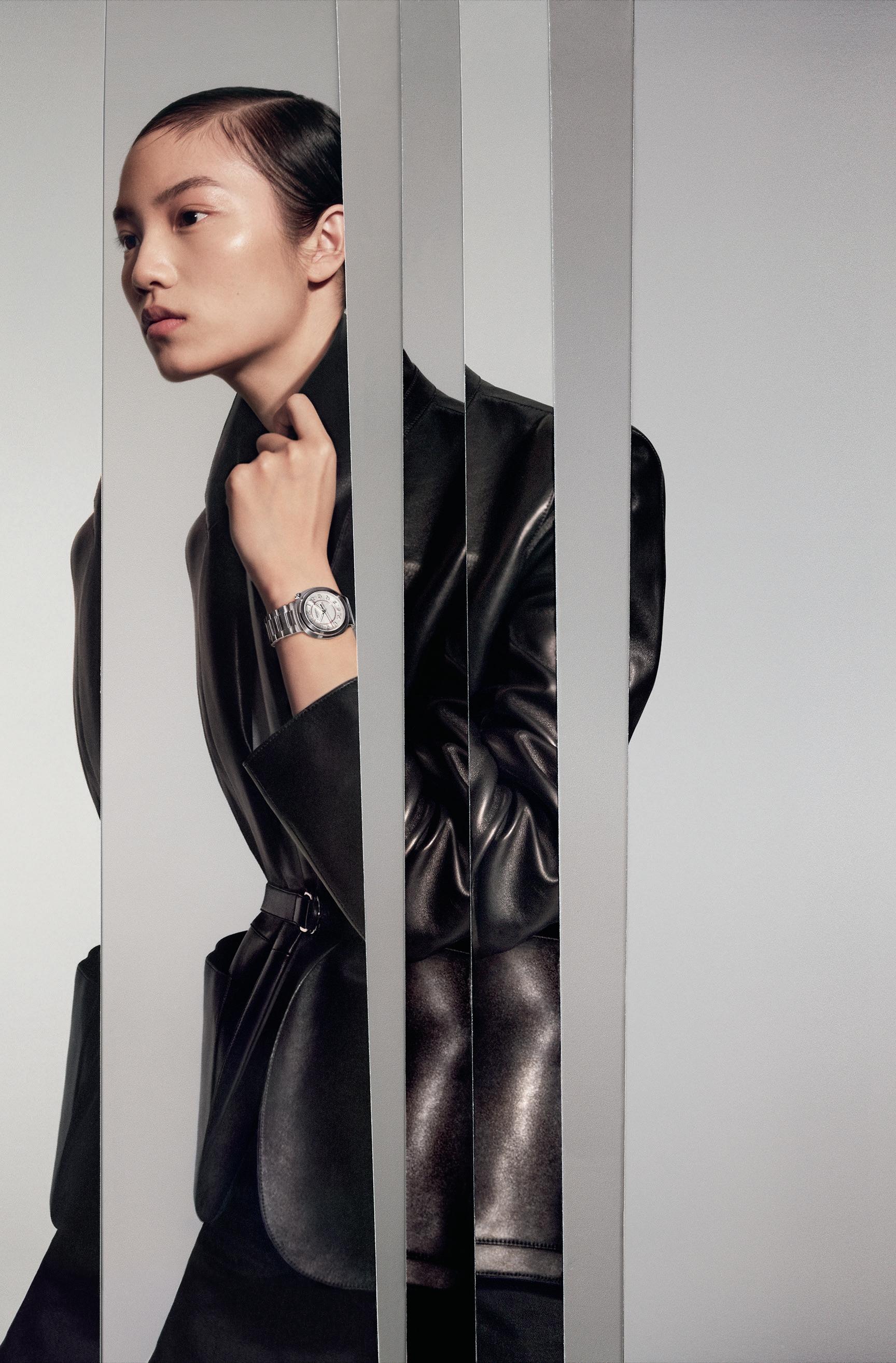
July 13, 2024


July 13, 2024


AMONG PUBLIC UNIVERSITIES IN NORTHEAST
AMONG PUBLIC UNIVERSITIES IN NORTHEAST OHIO
AMONG PUBLIC UNIVERSITIES IN NORTHEAST OHIO

At The University of Akron, students become confident leaders, engaged community members and career-ready graduates. We provide the connections and support to make their time in college result in much more than earning a degree.
At The University of Akron, students become confident leaders, engaged community members and career-ready graduates. We provide the connections and support to make their time in college result in much more than earning a degree.
At The University of Akron, students become confident leaders, engaged community members and career-ready graduates. We provide the connections and support to make their time in college result in much more than earning a degree.

Our students bring their passion, and we provide the possibilities.
Our students bring their passion, and we provide the possibilities.
Our students bring their passion, and we provide the possibilities.





Saturday, July 13, 2024, at 7 PM
The Cleveland Orchestra
Domingo Hindoyan, conductor
ALEXANDER BORODIN Polovtsian Dances 15 minutes (1833–1887) from Prince Igor Blossom Festival Chorus
ALEXANDER ARUTIUNIAN Trumpet Concerto 20 minutes (1920–2012) Michael Sachs, trumpet
INTERMISSION 20 minutes
SERGEI RACHMANINOFF Symphony No. 3 40 minutes (1873–1943) in A minor, Op. 44
I. Lento — Allegro moderato
II. Adagio ma non troppo — Allegro vivace
III. Allegro
Total approximate running time: 1 hour 35 minutes




























BY
A Partnership between Kent State University and The Cleveland Orchestra





JUNE 23 — JULY 28

Celebrating its 56th season, the Kent Blossom Music Festival is an advanced institute for professional music training operated by Kent State University in cooperation with The Cleveland Orchestra presenting public performances by distinguished artist faculty and talented young musicians.

Concert & Ticket Information: WWW.KENT.EDU/BLOSSOM

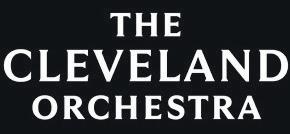

TTHE THREE COMPOSERS heard on this evening’s program are generationally distinct, yet they all reflect, to varying degrees, soundscapes that predominated in regions ruled or influenced by Russia. Alexander Arutiunian is, undoubtedly, an Armenian composer, yet for much of his lifetime, Armenia was treated by the Soviet Union as essentially a vassal state — the influence of Soviet culture would have been almost inescapable there for most of the 20th century. Conversely, Borodin, the earliest of the three composers, was firmly a product of 19th-century Russia, older even than his more famous contemporary Tchaikovsky and dying long before the overthrow of the Tsar. Born in 1873, Rachmaninoff was obliged, like so many others, to make the uneasy transition (in exile) from the old Russia to the new — though, famously, he did not attempt a substantially new musical language in tandem with this epochal shift.
HE THREE COMPOSERS heard on this evening’s program are generationally distinct, yet they all reflect, to varying degrees, soundscapes that predominated in regions ruled or influenced by Russia. Alexander Arutiunian is, undoubtedly, an Armenian composer, yet for much of his lifetime, Armenia was treated by the Soviet Union as essentially a vassal state — the influence of Soviet culture would have been almost inescapable there for most of the 20th century. Conversely, Borodin, the earliest of the three composers, was firmly a product of 19th-century Russia, older even than his more famous contemporary Tchaikovsky and dying long before the overthrow of the Tsar. Born in 1873, Rachmaninoff was obliged, like so many others, to make the uneasy transition (in exile) from the old Russia to the new — though, famously, he did not attempt a substantially new musical language in tandem with this epochal shift.
Borodin’s Polovtsian Dances, from his uncompleted opera Prince Igor, have held the stage for more than a century as one of the beloved exercises in Russian orchestral color, slightly predating Rimsky-Korsakov’s Scheherazade, another of the great Russian orchestral spectacles. These are representative of an exoticist vein in Russian Romanticism, by which far-flung cultures were given a fictionalized (often implicitly sexualized) musical treatment — imperial sightseeing-tours-in-sound of an imagined Near East.
Borodin’s Polovtsian Dances, from his uncompleted opera Prince Igor, have held the stage for more than a century as one of the beloved exercises in Russian orchestral color, slightly predating Rimsky-Korsakov’s Scheherazade, another of the great Russian orchestral spectacles. These are representative of an exoticist vein in Russian Romanticism, by which far-flung cultures were given a fictionalized (often implicitly sexualized) musical treatment — imperial sightseeing-tours-in-sound of an imagined Near East.
Rachmaninoff is often heard as continuing, albeit more subtly, in the Russian exoticist tradition, though that element was tempered somewhat in his Third Symphony, a late work from the composer’s final decade in the 1930s. Arutiunian’s Trumpet Concerto from 1950 clings to some of those qualities that made Russian and other Romantic nationalist musical traditions — including Armenia’s — so compelling to international audiences, while adopting a more modern outlook. The surfeit of melody and color remains, but the structure is arrestingly concise: no wonder it has become a repertory piece for trumpet players, including The Cleveland Orchestra’s own Michael Sachs.
Rachmaninoff is often heard as continuing, albeit more subtly, in the Russian exoticist tradition, though that element was tempered somewhat in his Third Symphony, a late work from the composer’s final decade in the 1930s.
Arutiunian’s Trumpet Concerto from 1950 clings to some of those qualities that made Russian and other Romantic nationalist musical traditions — including Armenia’s — so compelling to international audiences, while adopting a more modern outlook. The surfeit of melody and color remains, but the structure is arrestingly concise: no wonder it has become a repertory piece for trumpet players, including The Cleveland Orchestra’s own Michael Sachs.
— Dane–Michael Harrison Dane–Michael Harrison is a research fellow in the Archives of The Cleveland Orchestra for the 2023–24 season. He is a PhD candidate in historical musicology at Case Western Reserve University.
— Dane–Michael Harrison
Dane–Michael Harrison is a research fellow in the Archives of The Cleveland Orchestra for the 2023–24 season. He is a PhD candidate in historical musicology at Case Western Reserve University.
by Alexander Borodin
BORN: November 12, 1833, in St. Petersburg
DIED: February 27, 1887, in St. Petersburg
COMPOSED: 1874–76
WORLD PREMIERE: February 27, 1879, at the Free Music School in St. Petersburg, conducted by Nikolai Rimsky-Korsakov
CLEVELAND ORCHESTRA PREMIERE: November 6, 1924, led by Music Director Nikolai Sokoloff
ORCHESTRATION: 2 flutes, piccolo, 2 oboes (2nd doubling English horn), 2 clarinets, 2 bassoons, 4 horns, 2 trumpets, 3 trombones, tuba, timpani, percussion (bass drum, snare drum, tambourine, cymbals, chimes, glockenspiel, and triangle), harp, strings, and chorus
DURATION: about 15 minutes
See page 8 for sung texts and translations.
FOR THE LAST 20 YEARS of his life, Alexander Borodin’s highest ambition was to write an opera on a Russian historical subject. Ever since his friend and mentor, Vladimir Stasov, had suggested that he take on the oldest Russian epic, The Lay of Igor’s Campaign (dating from the 12th century), Borodin was thinking of ways to make an opera of Prince Igor’s war against the Polovtsians (an Asian people group related to the Turks). At the composer’s untimely death at age 54, the opera was still unfinished. It was far enough along, however, that two of his colleagues, Nikolai Rimsky-Korsakov and Alexander Glazunov, undertook to make a performing edition, filling in musical passages as well as some texts that Borodin had not yet written. (The completed opera was performed for the first time in November 1890, three years after Borodin’s death.)
Borodin had trouble finding time to compose throughout much of his life because he had a dual career in music and science, being professor of chemistry at the Medico-Surgical Academy in St. Petersburg. He thus left many musical works unfinished, or otherwise not ready for publication, at the time of his death.
Nevertheless, Prince Igor is very much Borodin’s work, and there are whole scenes and stretches of music that he fully completed (often with substantial urging by Rimsky-Korsakov, who liked to arrange for performances of newly-written excerpts from the opera). The Polovtsian Dances are one of these instances, which Borodin completed in 1874–76 and which were premiered as an excerpt in February 1879.
Like Mussorgsky with his opera Boris Godunov, Borodin in Prince Igor tried to paint a large historical canvas with heroes shown as individuals with personal
feelings. Therefore, the political topic is interwoven with a love interest between Igor’s son Vladimir and Konchakovna, the daughter of Konchak, the leader of the enemy Polovtsians. Borodin also insisted on portraying Konchak as not entirely evil, but capable of treating his enemies with honor and dignity. After capturing Igor, he orders his people to entertain his noble prisoner with song and dance; it is then that the Polovtsian Dances, the best-known excerpt from the opera, are performed.
(Additionally, more than 60 years after the opera’s premiere, a variety of Borodin’s music was borrowed and adapted by Robert Wright and George Forrest for the 1953 Broadway musical Kismet, which helped to further popularize several melodies from Prince Igor.)
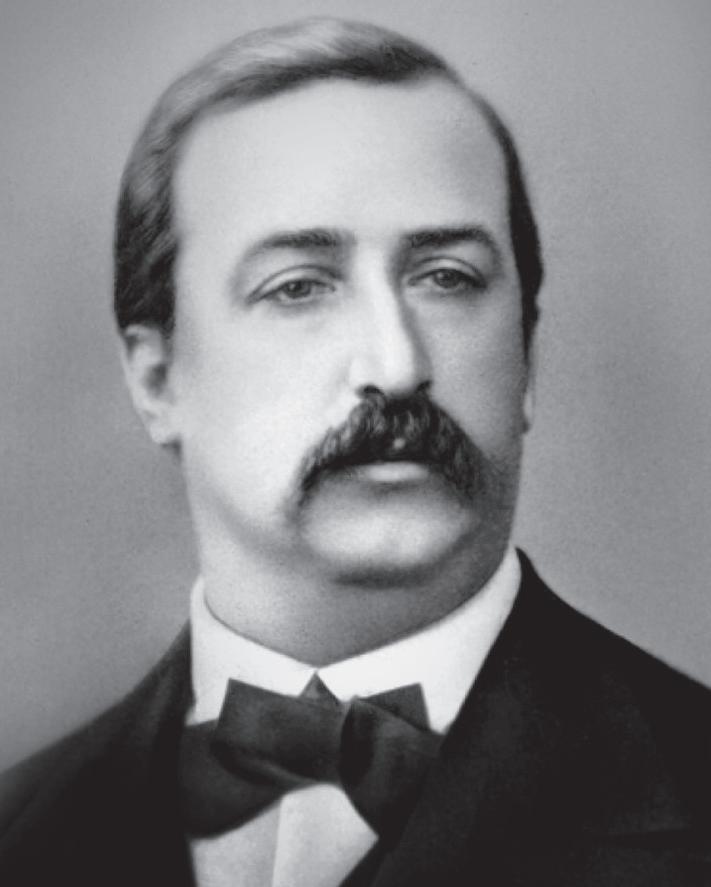
—
Peter Laki
Peter Laki is a musicologist and frequent lecturer on classical music. He is a visiting associate professor of music at Bard College.



Text by Alexander Borodin and Nikolai Rimsky-Korsakov
English based on translation by Andrew
Huth
SOPRANOS AND ALTOS
Uletay na krylakh vetra ty v kray rodnoy, rodnaya pesnya nasha, tuda, gde my tebya svobodno peli, gde bylo tak privolno nam s toboyu. Tam, pod znoynym nebom, negoy vozdukh polon; tam, pod govor morya, dremlyut gori v oblakakh.
Tam tak yarko slontse svetit, rodniye gopry svetom zalivaya, v dolinakh pishno rozy raztsvetayut
I solovi poyut v lesakh zelyonykh, I sladkiy vinograd rostyot. Tam tebe privolney pesnya … ty tuda i uletay.
FULL CHORUS
Poyte pesni slavi khanu! Poy!
Slavte silu doblest khana! Slav!
Slaven khan! Khan!
Slaven on, khan nash!
Bleskom slavy solntsu raven khan!
Netu ravnikh slavoy khanu! Net!
SOPRANOS AND ALTOS
Chagi khana, slavyat khana svoyevo …
Fly away on the wings of the wind to our native land, beloved song; there, where we sang you freely, where we were so free together. There, beneath sultry skies the air is heavy with languor, there to the murmuring of the sea the mountains slumber in the clouds. There shines the dazzling sun bathing our native mountains in light, roses bloom luxuriantly in the valleys and nightingales sing in the green woods, and the sweet vine flourishes. You were free there, my song … fly away there.
Sing to the Khan’s glory! Sing!
Praise the Khan’s strength and valor! Praise! The Khan is glorious! The Khan! He is glorious, our Khan!
The Khan’s splendor is equal to the sun’s glory! Nothing equals the Khan’s glory! Nothing!
The Khan’s captive maidens praise their Khan …
FULL CHORUS
Poyte pesni slavy Khanu! Poy!
Slavte shchedrost, slavte milost! Slav!
Dlya vragov khan
Strashen on, khan nash!
Kto zhe slavoy raven khanu? Kto?
Bleskom slavy solntsa raven on!
TENORS AND BASSES
Slavoy dedam raven khan nash, khan Konchak!
Slavoy dedam raven on!
Grozniy khan, khan Konchak!
Slaven khan, khan Konchak …
SOPRANOS AND ALTOS
Uletay na krylakh vetra ty v kray rodnoy, rodnaya pesnya nasha …
TENORS AND BASSES
Slavnoy dedam raven khan nash, khan Konchak!
Slavoy dedam raven on, gorzniy khan Konchak!
FULL CHORUS
Pyaskoy vashey teshte khana, chagi …
Khana svoyevo …
Nash khan Konchak!
Sing to the Khan’s glory! Sing!
Praise his generosity and his bounty! Praise! To his enemies the Khan is terrifying, our Khan!
Who could equal the Khan in glory? Who? His splendor is equal to the sun’s glory!
Our Khan is as glorious as his forefathers, Khan Konchak!
He is as glorious as his forefathers! Khan Konchak is a fearsome Khan! The Khan is glorious, Khan Konchak …
Fly away on the wings of the wind to our native land, beloved song …
Our Khan is as glorious as his ancestors, Khan Konchak!
He is as glorious as his forefathers, fearsome Khan Konchak!
Entertain Khan with your dances, captive maidens …
Your Khan …
Our Khan Konchak!
by Alexander Arutiunian
BORN: September 23, 1920, in Yerevan, Armenia
DIED: March 28, 2012, in Yerevan
COMPOSED: 1950
WORLD PREMIERE: 1950, in Moscow, with soloist Haykaz Mesiayan and conductor Karl Eliasberg leading the USSR State Orchestra
This performance marks the first presentation of Arutiunian’s Trumpet Concerto by The Cleveland Orchestra.
ORCHESTRATION: 2 flutes (2nd doubling piccolo), 2 oboes, 2 clarinets, 2 bassoons, 4 horns, 2 trumpets, 3 trombones, tuba, timpani, percussion (cymbals, bass drum, snare drum, triangle), harp, and strings, plus solo trumpet
DURATION: about 20 minutes
THE RICH MUSICAL TRADITIONS of Armenia underwent a renaissance in the mid-20th century, which is surprising considering the circumstances from which it arose. After the horrors of the Armenian genocide and the later takeover of the country by the Soviet Union, new opportunities quickly arose for state-sponsored art and culture. Many musicians reembraced folk music as a means of reclaiming their national heritage and processing the devastation of the preceding decades (not to mention appeasing the Soviet censors). The pioneering work of ethnomusicologist Komitas (1869–1935) also played an indispensable role in this cultural flourishing. Komitas had spent several years in the late-19th and early-20th century collecting and transcribing folk music from Armenia and surrounding areas, leaving behind a generous collection of material from which to draw.
Composers in the classical sphere also found new inspiration in folk music. Aram Khachaturian became well-known — both in Armenia and across the world — for his distinctive folk-inflected style, made famous through his ballet scores Gayane and Spartacus. Similarly, Alexander Arutiunian followed in the footsteps of his older compatriot with works that fuse Western art music with the sounds of his native Armenia. This style clearly resonated with Soviet officials, as Arutiunian’s long career was peppered with copious state awards, including the 1949 USSR State Prize.
Though Arutiunian’s impressive output includes orchestral works, film scores, operas, choral pieces, and chamber music, the Trumpet Concerto remains his most celebrated work. Composed in 1950 and premiered by the Armenian trumpeter

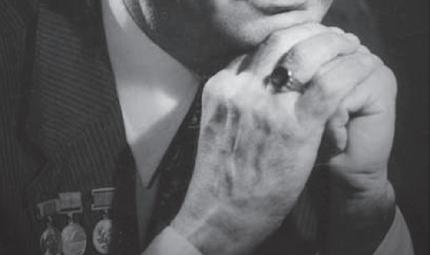
Haykaz Mesiayan, the work was greeted with immediate acclaim. Subsequent performances abroad by Timofei Dokschitzer helped solidify its popularity and to this day, it remains a staple of the trumpet literature.
While the concerto displays traits similar to Khachaturian’s blended style — as well as fleeting hints of Prokofiev and Shostakovich — the overall musical language is Arutiunian’s own and proudly displays melodic, harmonic, and rhythmic connections to Armenian folk music (though no actual folk tunes are used).
The concerto is structured in a single movement divided into seven sections. A unison E flat played by the orchestra raises the curtain before the soloist enters the spotlight, proclaiming a dramatic melody that sounds quasi-improvisatory. The orchestra then launches into the next section (marked Allegro energico), and the trumpet introduces a rousing new theme. It is here that the concerto’s Armenian flavor becomes fully apparent, with tiny chromatic flourishes and turns of phrase that provide more than a hint of folk music.
A contrasting Meno mosso section is heralded by a languid clarinet solo as the trumpet takes up a more songlike melody. However, the fast tempo soon returns with the sprightly theme appearing in the orchestra rather than the trumpet (the latter comments with other material instead). A second Meno mosso offers another lyrical episode but this time, the trumpet’s tone is shaded with the addition of a mute.
The low strings quicken the tempo once again through shifting meters and some delightful rhythmic interplay as the trumpet finally returns to the melody introduced in the first Allegro. Before long, though, all motion halts, and the player pulls out the remaining stops in a dazzling cadenza. A brief yet dramatic orchestral postscript then brings the curtain down, ending with a unison punctuation from soloist and ensemble.
— Kevin McBrien




by Sergei Rachmaninoff
BORN: April 1, 1873, in Semyonovo, Russia
DIED: March 28, 1943, in Beverly Hills, California
COMPOSED: 1935–36
WORLD PREMIERE: November 6, 1936, with Leopold Stokowski conducting the Philadelphia Orchestra
CLEVELAND ORCHESTRA PREMIERE: November 4, 1937, conducted by Music Director Artur Rodziński
ORCHESTRATION: 2 flutes, piccolo, 2 oboes, English horn, 2 clarinets, bass clarinet, 2 bassoons, contrabassoon, 4 horns, 3 trumpets, 3 trombones, tuba, timpani, percussion (snare drum, bass drum, cymbals, tam-tam, tambourine, triangle, xylophone), harp, celesta, and strings
DURATION: about 40 minutes
FOR YEARS AFTER HIS EMIGRATION from Russia in 1918, Rachmaninoff wrote almost no music. With most of his possessions left behind in Russia, and facing the need to support his family, he decided to change the course of his life at age 45 and embark on a virtuoso career. Although he had been famous as a prodigious pianist since his youth, he had rarely performed anything but his own music. He now built up a repertoire of classical works, quickly establishing his international reputation as one of the greatest pianists of his time. For years he had a busy concert schedule in Europe and the United States, and it is natural that little time was left for composing. His only major works written during the 1920s were the Fourth Piano Concerto and the Three Russian Songs for chorus and orchestra.
It was not until the 1930s that Rachmaninoff again devoted more time to composing. He had not given up concertizing altogether, but in the villa he bought in Switzerland he at last had the time and peace of mind to engage in some large-scale creative projects. Thus, beginning in 1934, he wrote his popular Rhapsody on a Theme of Paganini, followed by the Third Symphony and the Symphonic Dances (which was his last finished composition).
Almost 30 years separate the Third Symphony from the Second, which was finished in 1907. Taking up symphony-writing where he had left off a generation earlier, Rachmaninoff stayed remarkably true to himself, and was largely untouched by more recent musical developments. This is not to say that his style had not changed. It had become richer and the range of colors on his palette was expanded considerably.
However, his basic view of the symphonic form had remained much the same — to his mind, a symphony should be an invariably majestic and dignified work for orchestra whose movements were fairly standardized in character and whose formal structure was largely pre-ordained by tradition.
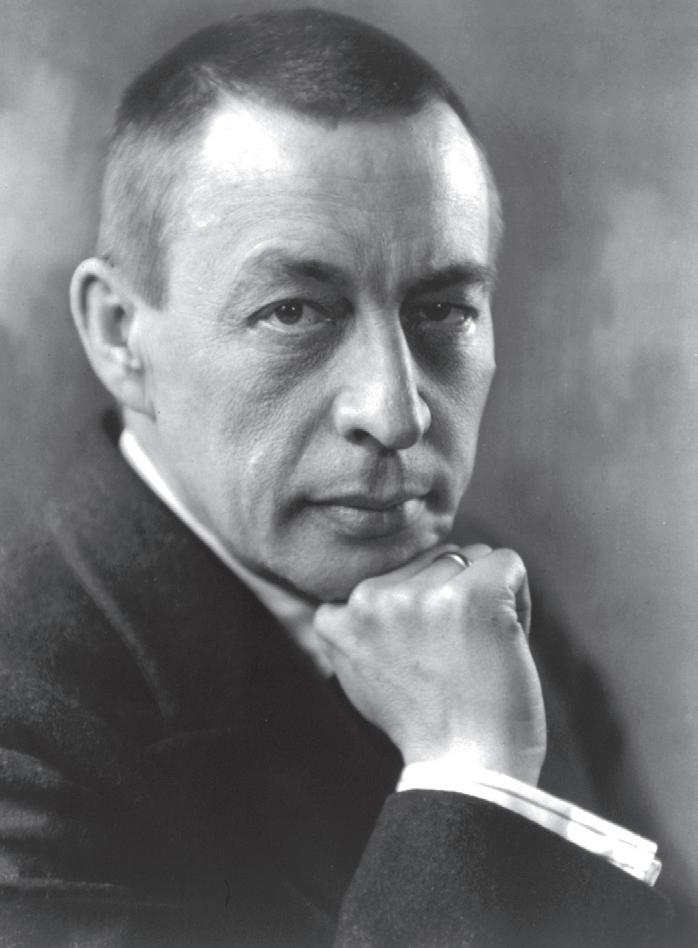
Like Rachmaninoff’s first two symphonies, the Third opens with a motto that recurs in all movements. This motto is made up of only three different notes; despite its simplicity, however, it bears the stamp of Rachmaninoff’s personality. Its scoring for three solo instruments — clarinet, horn, and cello — immediately draws our attention to the virtuosic orchestration that characterizes the entire piece. Commentator Patrick Piggott explains this motto as a “fatalistic” reminder “that our destiny is inescapable and that however persuasive human eloquence may be, fate will have the last, inevitable word.” The motto is also capable of undergoing transformations in rhythm and orchestration to adopt a more resolute, dramatic tone, yet it is most memorable when it appears at the end of both the first and the second movements in a veiled, quiet pianissimo passage and with an unmistakable tinge of resignation.
The second movement contains many exquisite moments featuring successive solos of horn (accompanied by harp), violin, flute (accompanied by harp, celesta, and four solo violas), and bass clarinet. The fast middle section is remarkable for its rhythmic poignancy and many sudden contrasts in volume and instrumentation.
The themes that make up the third movement are rather diverse in tempo, tonality, and orchestration. The buoyant first theme, played by the full orchestra with a strong rhythmic drive, is contrasted with a more lyrical second subject, to which the forceful chords of the harp make a significant contribution. A small melodic fragment, introduced by an unaccompanied solo bassoon, turns out to be the cell out of which a whole central fugato (fugue-like section featuring overlapping, imitative lines) grows. There is a re-transition in which percussion (especially snare drum) is prominent, leading to an almost complete recapitulation.
Some writers have detected traces of the famous “Dies irae” chant (which plays an important role in several of Rachmaninoff’s works, including the Rhapsody on a Theme of Paganini) in parts of this finale; however, the intervals have been modified so as to make the reference (if any) an incredibly vague one. The dark character of the “Dies irae,” at any rate, seems hardly relevant to the exuberant mood of the finale. The coda belongs to the most brilliant moments in the piece: what are traditionally thought to be keys remote from each other are directly juxtaposed, and the final A-major chord is approached from an unusual angle that, while hardly a novelty in 1936, nevertheless shows that Rachmaninoff was not always the arch-conservative he is reputed to have been. (Piggott relates that Rachmaninoff’s old friend, Russian émigré composer Nikolai Medtner, who heard the first London performance, was distressed by what seemed to him regrettable concessions to “modernism” on his friend’s part.)
Rachmaninoff’s Third Symphony is perhaps the last blossom on the tree of the Russian symphonic tradition symbolized by Tchaikovsky. Rachmaninoff carried on this tradition, in which he believed deeply, in the most interesting and innovative way possible. As Piggott writes, “Rachmaninoff perfectly succeeded in what he set out to do in this symphony, and orchestras and conductors are evidently becoming increasingly aware of its importance as a valuable addition to the symphonic repertoire of the 20th century.”
— Peter Laki


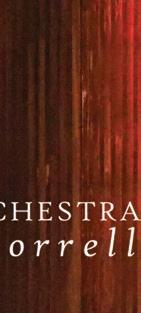
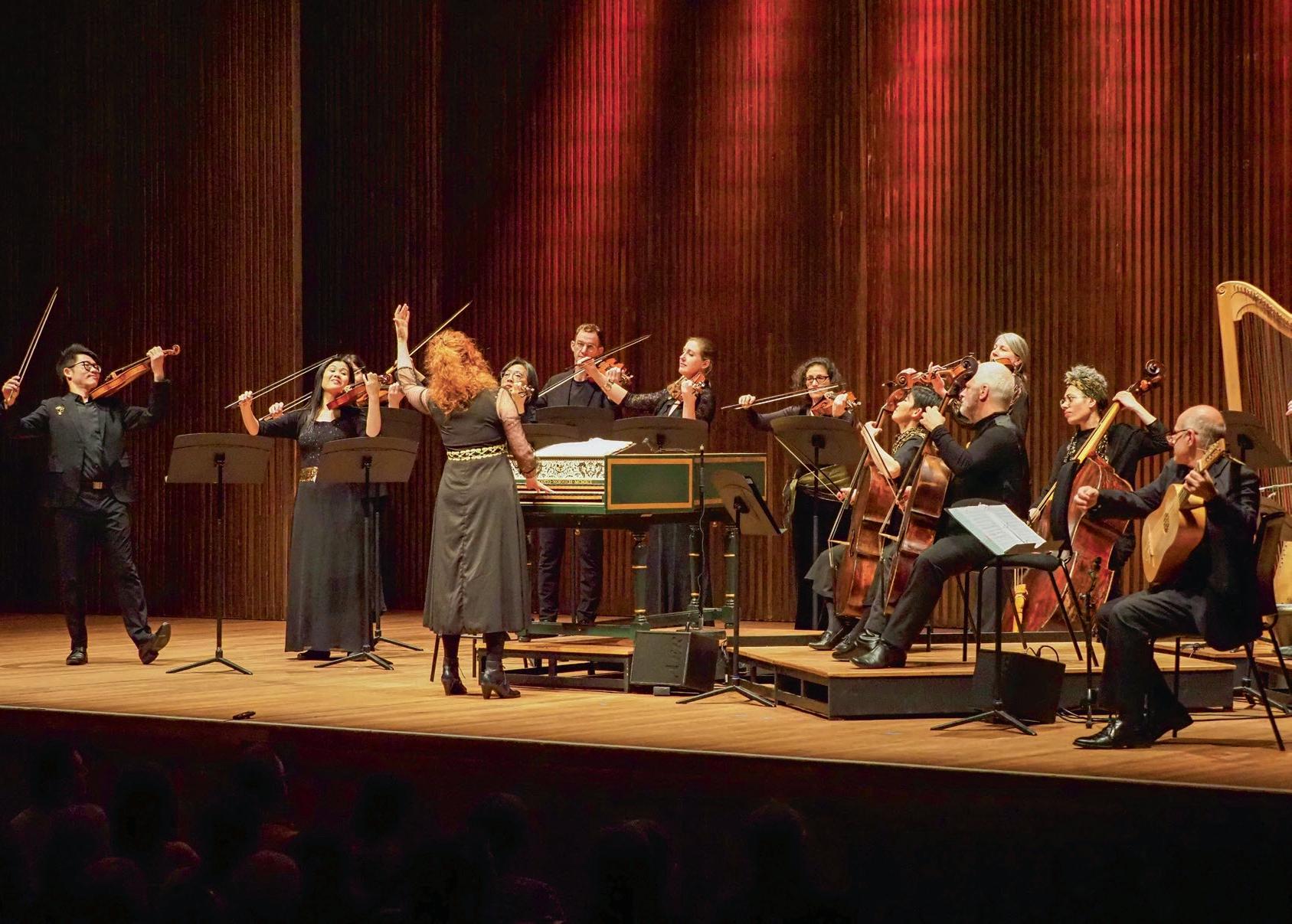
“Sorrell and her DAZZLING period band... are incandescent.”
rd
TICKETS & SUBSCRIPTIONS ON SALE NOW!
OCTOBER 18-22 | BACH’S Brandenburg Concertos
NOVEMBER 14-17 | Hope & Solitude
DECEMBER 4-8 | WASSAIL! An Irish-Appalachian Christmas
DECEMBER 10-14 | Handel’s MESSIAH
FEBRUARY 6-9 | Virtuoso Brilliance
FEBRUARY 27 - MARCH 2 | Classical Sparks
APRIL 4 – MAY 4 | BACHANALIA!
In restaurants, schools, churches. and concert halls… Bach & Apollo’s Fire take over Northeast Ohio for 30 days!
APRIL 4-8 | BACH’S B Minor Mass
Mainstage Concerts
Family Concerts - April 26-27
“Bach’s Amazing Musical Family”
Baroque Bistro Concerts - May 2-4
Bach’s Coffee Cantata, semi-staged
...plus Music Workshops in public schools around NEO and a Conductors’ Workshop led by Jeannette Sorrell.
conductor

Domingo Hindoyan is chief conductor of the Royal Liverpool Philharmonic Orchestra and one of today’s most exciting and celebrated conductors.
During his first season in Liverpool, Hindoyan opened his tenure with a critically acclaimed conducting debut at the BBC Proms, after which he embarked upon various recording projects. He also collaborated with Liverpool’s “In Harmony” education program and continued to demonstrate his commitment to new music with various world premieres and commissions during his second season. Hindoyan’s latest recording with Liverpool, featuring Bruckner’s Fourth Symphony, was released in February 2024.
Highlights of the 2023–24 season included a string of debuts in the US, with The Cleveland Orchestra, Los Angeles Philharmonic, Minnesota Orchestra, and Boston Symphony Orchestra. He also conducted various performances in Europe, including returns to the BBC Proms and appearances with the Aarhus Symfonikester and Royal Philharmonic Orchestra.
On the opera stage, this season saw Hindoyan make a return to the Deutsche Staatsoper Berlin with a production of Madama Butterfly and to the Opera National de Bordeaux for Rusalka. He also conducted a production of Turandot at Opera Dijon. In recent seasons, Domingo has led performances at the Metropolitan Opera, Chicago Lyric Opera, Liceu Opera Barcelona, Wiener Staatsoper, Teatro Real Madrid, Royal Swedish Opera, and Dresden Semperoper.
Hindoyan continues to enjoy a vibrant career leading acclaimed ensembles and orchestras around the world including the Orchestre National de France, Philharmonia Orchestra, Dresdner Philharmonie, New Japan Philharmonic Orchestra, Kansas City Symphony, San Diego Symphony, and Czech Philharmonic. He has also conducted at many renowned festivals, such as the Menuhin Festival Gstaad, and as a regular guest at the Festival Radio France Occitanie Montpellier.
Hindoyan was born in Caracas, Venezuela. He began his career as a violinist and member of the renowned music education program El Sistema, before playing in Daniel Barenboim’s West-Eastern Divan Orchestra. He later went on to study conducting at the Haute École de Musique de Genève with Laurent Gay and was the first assistant to Barenboim at the Deutsche Staatsoper Berlin between 2013 and 2016.
trumpet

Robert and Eunice Podis Weiskopf Chair – Trumpet
Mary Elizabeth and G. Robert Klein Chair – Cornet
Michael Sachs joined The Cleveland Orchestra as principal trumpet in 1988. Currently celebrating his 36th season, he is the longest-serving principal trumpet in the Orchestra’s history. During his tenure, he has appeared as a soloist with the Orchestra on 25 different works, including the world premieres of John Williams’s Concerto for Trumpet, Michael Hersch ’s Night Pieces (both commissioned by The Cleveland Orchestra for Sachs), and Matthias Pintscher ’s Chute d’Étoiles. Most recently, he premiered Wynton Marsalis’s Concerto for Trumpet with the Orchestra in April 2023. His recital of music for trumpet and organ (with organist Todd Wilson) was recorded and released in 2005 by the Musical Arts Association on the album Live from Severance Hall.
Since 2015, Sachs has served as music director of the Strings Music Festival in Steamboat Springs, Colorado. As a co-founder and lead artistic administrator of the National Brass Ensemble, Sachs performed on the National Brass Ensemble’s 2014 Gabrieli recording and subsequent concert in Chicago’s Orchestra Hall, in addition to their 2022 academy, concert, and recording, Deified.
Starting in fall 2024, Sachs will be the trumpet instructor at The Curtis Institute of Music. From 1988 until 2023, he served as chair of the brass division and head of the trumpet department at the Cleveland Institute of Music. He is the author of 10 books, including Daily Fundamentals for the Trumpet, 14 Duets for Trumpet and Trombone (with Joseph Alessi), The Orchestral Trumpet, Practice Sequences for the Orchestral Trumpet, as well as updated versions of Ernst Sachse’s 100 Transposition Etudes for Trumpet and Wilhelm Wurm’s 120 Etudes for Trumpet.
Sachs was previously a member of the Houston Symphony and a faculty member at Rice University’s Shepherd School of Music. Originally from Santa Monica, California, he attended UCLA, receiving a BA in history before continuing his studies at The Juilliard School.
Continue your journey with Michael Sachs and The Cleveland Orchestra on adella.live with a digital production featuring Wynton Marsalis’s Concerto for Trumpet.
Franz Welser-Möst Music Director
KELVIN SMITH FAMILY CHAIR
FIRST VIOLINS
Liyuan Xie
FIRST ASSOCIATE CONCERTMASTER
Virginia M. Lindseth, PhD, Chair
Jung-Min Amy Lee
ASSOCIATE CONCERTMASTER
Gretchen D. and Ward Smith Chair
Stephen Tavani ASSISTANT CONCERTMASTER
Dr. Ronald H. Krasney Chair
Wei-Fang Gu
Drs. Paul M. and Renate H. Duchesneau Chair
Kim Gomez
Elizabeth and Leslie Kondorossy Chair
Chul-In Park
Harriet T. and David L. Simon Chair
Miho Hashizume
Theodore Rautenberg Chair
Jeanne Preucil Rose
Larry J.B. and Barbara S. Robinson Chair
Alicia Koelz
Oswald and Phyllis Lerner Gilroy Chair
Yu Yuan
Patty and John Collinson Chair
Isabel Trautwein
Trevor and Jennie Jones Chair
Katherine Bormann
Analisé Denise Kukelhan
Gladys B. Goetz Chair
Zhan Shu
Youngji Kim
Genevieve Smelser
SECOND VIOLINS
Stephen Rose*
Alfred M. and Clara T. Rankin Chair
Jason Yu2
James and Donna Reid Chair
Eli Matthews 1
Patricia M. Kozerefski and Richard J. Bogomolny Chair
Sonja Braaten Molloy
Carolyn Gadiel Warner
Elayna Duitman
Ioana Missits
Jeffrey Zehngut
Sae Shiragami
Kathleen Collins
Beth Woodside
Emma Shook
Dr. Jeanette Grasselli Brown and Dr. Glenn R. Brown Chair
Yun-Ting Lee
Jiah Chung Chapdelaine
VIOLAS
Wesley Collins*
Chaillé H. and Richard B. Tullis Chair
Stanley Konopka 2
Mark Jackobs
Jean Wall Bennett Chair
Lisa Boyko
Richard and Nancy Sneed Chair
Richard Waugh
Lembi Veskimets
The Morgan Sisters Chair
Eliesha Nelson
Anthony and Diane Wynshaw-Boris Chair
Joanna Patterson Zakany
William Bender
Thomas Lauria and Christopher Lauria Chair
Gareth Zehngut
CELLOS
Mark Kosower*
Louis D. Beaumont Chair
Richard Weiss 1
The GAR Foundation Chair
Charles Bernard2
Helen Weil Ross Chair
Bryan Dumm
Muriel and Noah Butkin Chair
Tanya Ell
Thomas J. and Judith Fay Gruber Chair
Ralph Curry
Brian Thornton
William P. Blair III Chair
David Alan Harrell
Martha Baldwin
Dane Johansen
Paul Kushious
BASSES
Maximilian Dimoff*
Clarence T. Reinberger Chair
Derek Zadinsky2
Charles Paul1
Mary E. and F. Joseph Callahan Chair
Mark Atherton
Thomas Sperl
Henry Peyrebrune
Charles Barr Memorial Chair
Charles Carleton
Scott Dixon
HARP
Trina Struble*
Alice Chalifoux Chair
FLUTES
Joshua Smith*
Elizabeth M. and William C. Treuhaft Chair
Saeran St. Christopher
Jessica Sindell2
Austin B. and Ellen W. Chinn Chair
Mary Kay Fink
PICCOLO
Mary Kay Fink
Anne M. and M. Roger Clapp Chair
OBOES
Frank Rosenwein*
Edith S. Taplin Chair
Corbin Stair
Sharon and Yoash Wiener Chair
Jeffrey Rathbun 2
Everett D. and Eugenia S. McCurdy Chair
Robert Walters
ENGLISH HORN
Robert Walters
Samuel C. and Bernette K. Jaffe Chair
CLARINETS
Afendi Yusuf*
Robert Marcellus Chair
Robert Woolfrey
Victoire G. and Alfred M. Rankin, Jr. Chair
Daniel McKelway2
Robert R. and Vilma L. Kohn Chair
Amy Zoloto
E-FLAT CLARINET
Daniel McKelway
Stanley L. and Eloise M. Morgan Chair
BASS CLARINET
Amy Zoloto
Myrna and James Spira Chair
BASSOONS
John Clouser*
Louise Harkness Ingalls Chair
Gareth Thomas
Barrick Stees2
Sandra L. Haslinger Chair
Jonathan Sherwin
CONTRABASSOON
Jonathan Sherwin
HORNS
Nathaniel Silberschlag*
George Szell Memorial Chair
Michael Mayhew§
Knight Foundation Chair
Jesse McCormick
Robert B. Benyo Chair
Hans Clebsch
Richard King
Meghan Guegold Hege
TRUMPETS
Michael Sachs*
Robert and Eunice Podis Weiskopf Chair
Jack Sutte
Lyle Steelman 2
James P. and Dolores D. Storer Chair
Michael Miller
CORNETS
Michael Sachs*
Mary Elizabeth and G. Robert Klein Chair
Michael Miller
TROMBONES
Brian Wendel*
Gilbert W. and Louise I. Humphrey Chair
Richard Stout
Alexander and Marianna C. McAfee Chair
Shachar Israel2
BASS TROMBONE
Luke Sieve
EUPHONIUM & BASS TRUMPET
Richard Stout
TUBA
Yasuhito Sugiyama*
Nathalie C. Spence and Nathalie S. Boswell Chair
TIMPANI
vacant
PERCUSSION
Marc Damoulakis*
Margaret Allen Ireland Chair
Thomas Sherwood
Tanner Tanyeri
KEYBOARD INSTRUMENTS
Carolyn Gadiel Warner
Marjory and Marc L. Swartzbaugh Chair
LIBRARIANS
Michael Ferraguto
Joe and Marlene Toot Chair
Donald Miller
Gabrielle Petek
ENDOWED CHAIRS CURRENTLY UNOCCUPIED
Elizabeth Ring and William Gwinn Mather Chair
Blossom-Lee Chair
Clara G. and George P. Bickford Chair
Paul and Lucille Jones Chair
Charles M. and Janet G. Kimball Chair
Sunshine Chair
Otto G. and Corinne T. Voss Chair
Mr. and Mrs. Richard K. Smucker Chair
Rudolf Serkin Chair
CONDUCTORS
Christoph von Dohnányi
MUSIC DIRECTOR LAUREATE
Daniel Reith
ASSOCIATE CONDUCTOR
Sidney and Doris Dworkin Chair
Lisa Wong
DIRECTOR OF CHORUSES
Frances P. and Chester C. Bolton Chair
* Principal § Associate Principal
1 First Assistant Principal
2 Assistant Principal
This roster lists full-time members of The Cleveland Orchestra. The number and seating of musicians onstage varies depending on the piece being performed. Seating within the string sections rotates on a periodic basis.
Now in its second century, The Cleveland Orchestra, under the leadership of Music Director Franz Welser-Möst since 2002, is one of the most sought-after performing ensembles in the world. Year after year, the ensemble exemplifies extraordinary artistic excellence, creative programming, and community engagement. The New York Times has called Cleveland “the best in America” for its virtuosity, elegance of sound, variety of color, and chamber-like musical cohesion.
Founded by Adella Prentiss Hughes, the Orchestra performed its inaugural concert in December 1918. By the middle of the century, decades of growth and sustained support had turned it into one of the most admired globally.
The past decade has seen an increasing number of young people attending concerts, bringing fresh attention to The Cleveland Orchestra’s legendary sound and committed programming. More recently, the Orchestra launched several bold digital projects, including the streaming platform Adella, the podcast On a Personal Note, and its own recording label, a new chapter in the Orchestra’s long and distinguished recording and broadcast history. Together, they have captured the Orchestra’s unique artistry and the musical achievements of the Welser-Möst and Cleveland Orchestra partnership.
The 2024–25 season marks Franz Welser-Möst’s 23rd year as music director, a period in which The Cleveland Orchestra earned unprecedented acclaim around the world, including a series of residencies at the Musikverein in Vienna, the first of its kind by an American orchestra, and a number of acclaimed opera presentations.
Since 1918, seven music directors — Nikolai Sokoloff, Artur Rodziński, Erich Leinsdorf, George Szell, Lorin Maazel, Christoph von Dohnányi, and Franz Welser-Möst — have guided and shaped the ensemble’s growth and sound. Through concerts at home and on tour, broadcasts, and a catalog of acclaimed recordings, The Cleveland Orchestra is heard today by a growing group of fans around the world. @ClevelandOrchestra
Whether escaping the bustle of daily life with a beloved classic or discovering new worlds with the less familiar, come share the extraordinary this season with The Cleveland Orchestra .

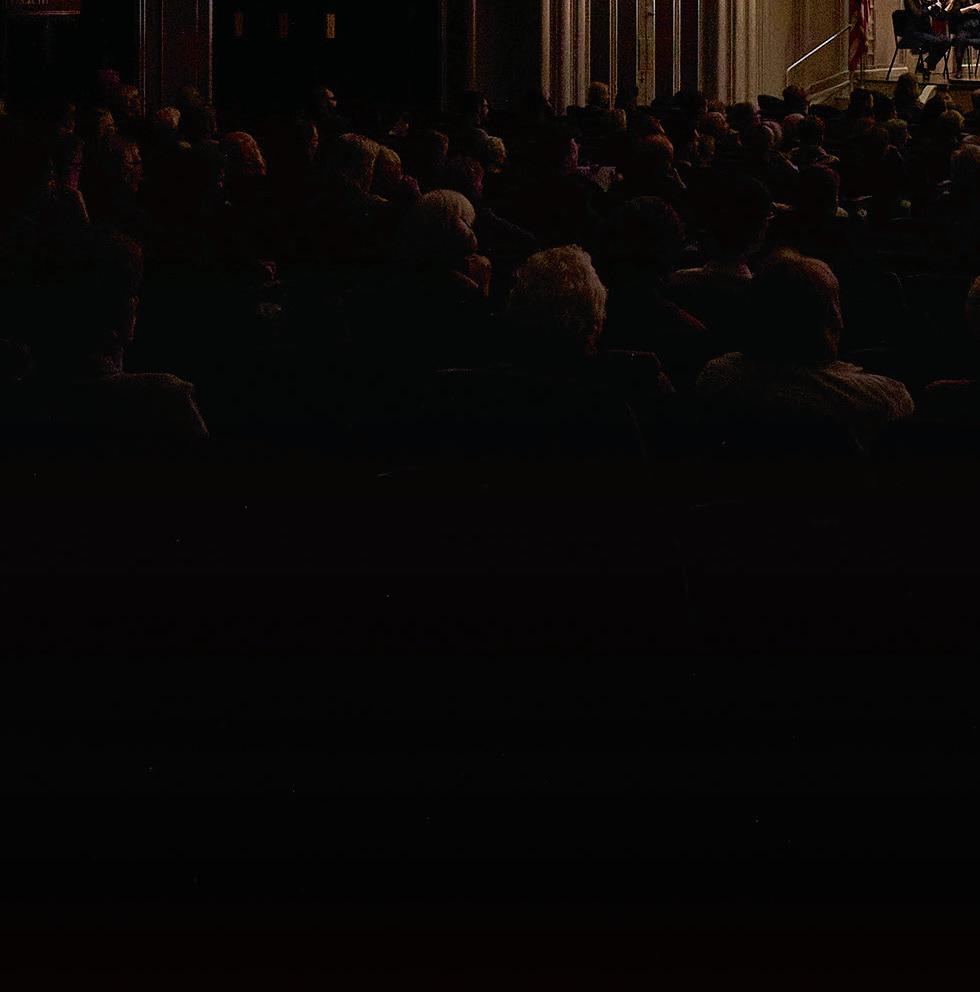
When you subscribe, you provide vital support to your Cleveland Orchestra and enjoy these exclusive benefits:
• The best seats at the best prices
• Free and easy ticket exchanges
•Purchase your parking in advance
• 20% off additional ticket purchases
• 10% off at The Cleveland Orchestra Store
•Money back guarantee
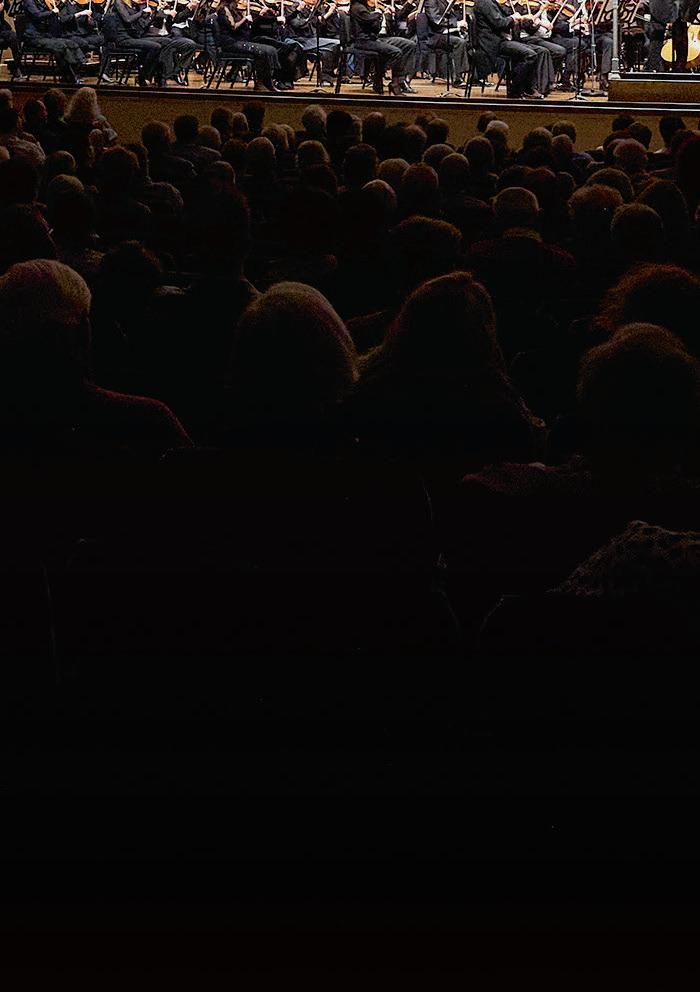


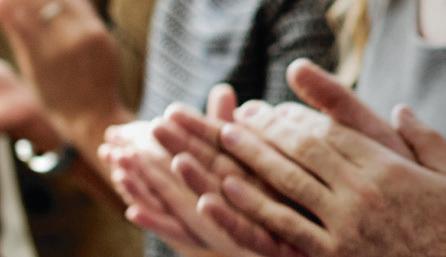

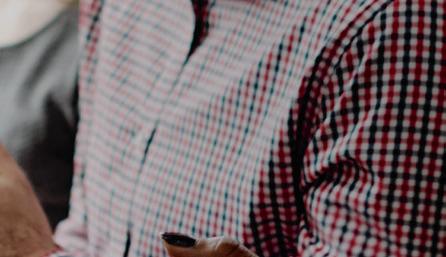
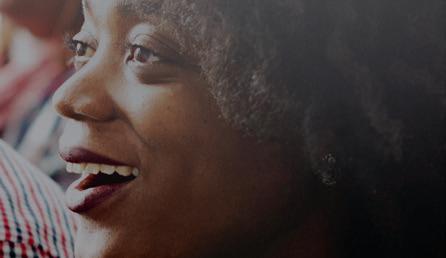
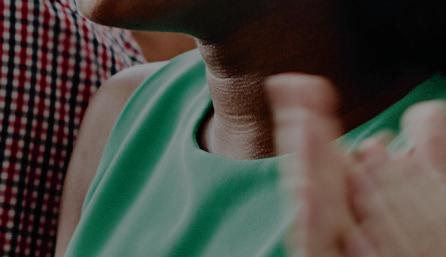


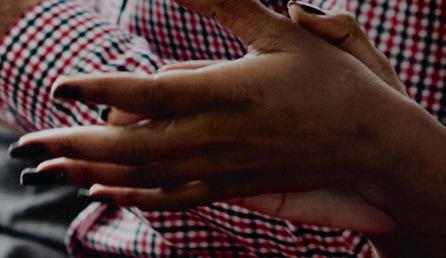



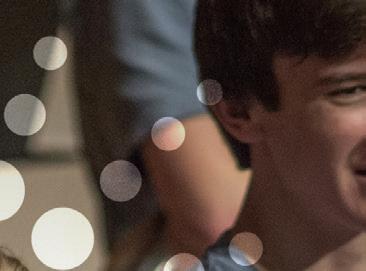
















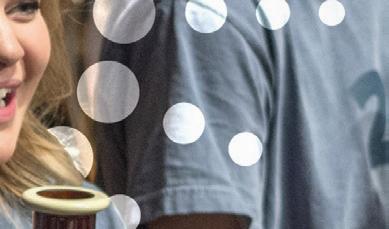























Lisa Wong Director of Choruses
FRANCES P. AND CHESTER C. BOLTON CHAIR
opened Blossom Music Center in 1968 to serve as the Orchestra’s summer home. A large new volunteer chorus was assembled for the inaugural concert and included many members of The Cleveland Orchestra Chorus and members of other Northeast Ohio choral groups. The Blossom Festival Chorus has since established itself as a permanent and beloved annual part of the Blossom Music Festival and has sung well over 100 concerts since its 1968 debut.
The Blossom Festival Chorus joins The Cleveland Orchestra Chorus at Severance every December for Holiday Concerts with The Cleveland Orchestra. They have also performed at Chautauqua and on Cleveland’s Public Square for the annual Fourth of July concerts.
Daniel J. Singer, Assistant Director
Daniel Overly, Collaborative Pianist
Jill Harbaugh, Director of Choral Operations
SOPRANOS
Amanda Baker
Jesse Bobbitt
Emily Carlson
Signe Carlson
Elisha Evanko
Lisa Fedorovich
Arianna Fouch
Olivia Giddings
Jennifer Gilles
Julia Halamek
Kiersten Johnson
Eleni Karnavas
Katie L. Kitchen
EvaCecilia Koh
Heidi Lang
Kate Macy
Sophia Marshall
Julie Myers-Pruchenski
Genesis Kelley Perez
Lenore M. Pershing
Sarah Peterson
Lisa M. Ramsey
Michelle L. Raymond
Cara Rovella
Monica Schie
Lily Simon
Morgan Smock
Meagan Ulery
ALTOS
Laurel Babcock
Roma Bandza
Kimberly E. Barrios
Debbie Bates
Riley Beistel
Kristina Bodnar
Kelly Boyd
Carla Cashman
Barbara J. Clugh
Bridget Corcoran
Amber Dimoff
Melody Bellora
Edmondson
Brooke Emmel
Jade Gladue
Kristen Hosack

Karen S. Hunt
Lindsey Macey
Karla McMullen
Abigail Patton
Erin Smith
Heather Swift
Melanie Tabak
Sasha Turner
Laure Wasserbauer
Emma Weihe
Maggie Fairman Williams
Leah Wilson
Lynne Leutenberg Yulish
TENORS
Rong Chen
David Erlandson
Jonathan Fuller
Richard Hall
Matthew Hisey
Clay Hoffner
Adam Kilo
David McCallum
Jacob Rumelfanger
Andrew Stamp
William Venable
Allen White
BASSES
Matthew Britton
Carlos Castells
Jeffrey D. Gershman
James Johnston
Kevin Kutz
Daniel Mills
Keith Norman
John Philipps
Robert Seaman
Charles Tobias
Michael Wellendorf
Martin Young
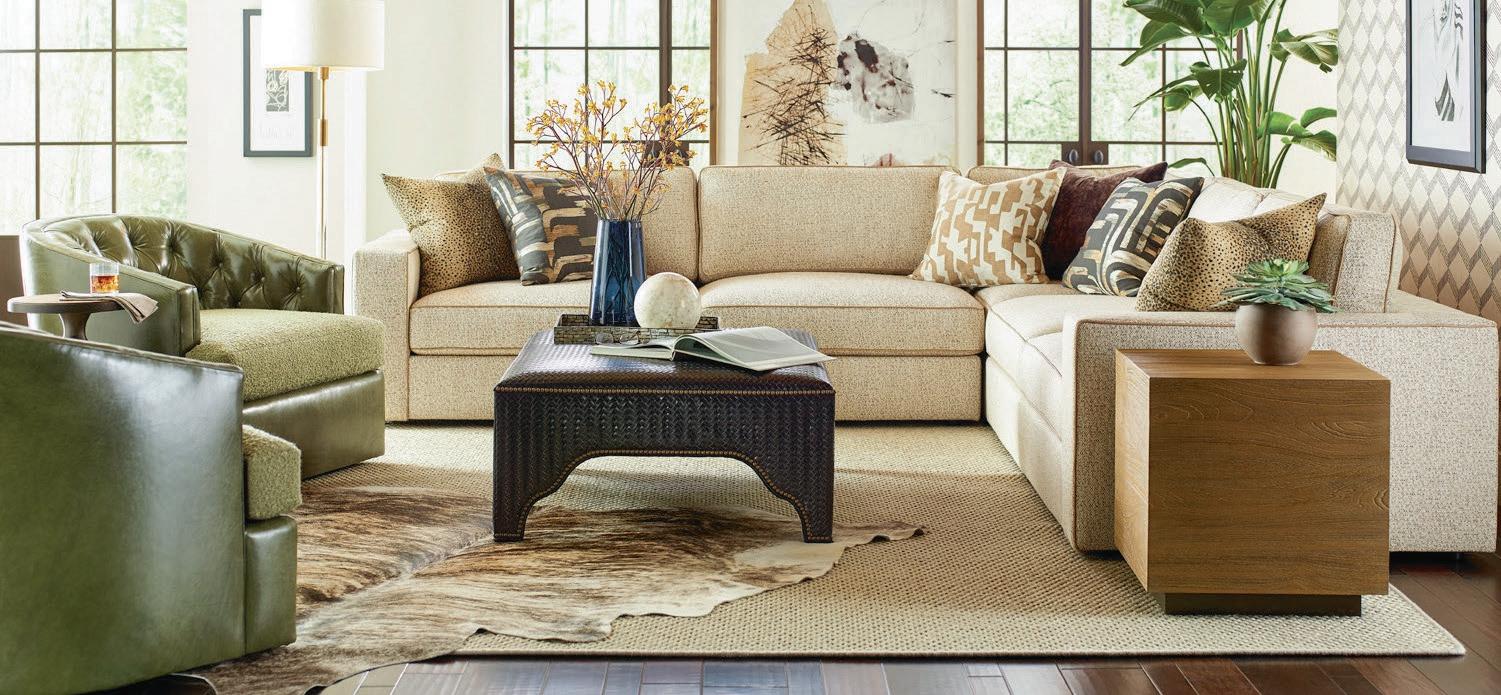


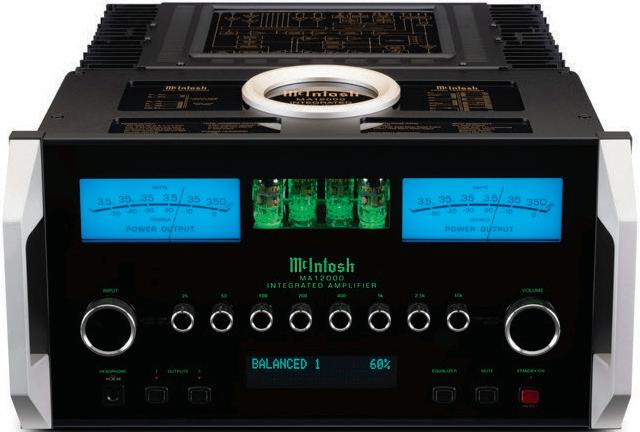









Guests with Pavilion seats who arrive after the start of the concert may be asked to wait outside the Pavilion until the first convenient pause in the music, after which our ushers will help you to your seats.
Guests on the Lawn may bring their own chairs, but guests with high-backed chairs that obstruct others’ views may be asked to relocate to the rear of the Lawn. Rental chairs are available for a fee of $10 per evening. Tents, flags, balloons, or other structures that might obstruct views or present a hazard are prohibited. Open flames are also prohibited.
Audio recording, photography, and videography are prohibited during performances at Blossom. Photographs and videos can only be taken when the performance is not in progress. As a courtesy to others, please silence all electronic devices prior to the start of the concert.
All Blossom Music Festival events are presented in a smoke-free environment. Smoking or
vaping are not allowed anywhere on the grounds or in buildings once you have entered through the ticket gates. A smoking area is available outside the gates in a designated area of Parking Lot A.
In the event of severe weather, a coordinated campus-wide alert will be issued. Guests and staff will be directed to safety by our staff and loudspeaker system. Visit clevelandorchestra. com or text BLOSSOM to 844-955-4377 for weather updates and more information.
Free tram service between the parking lots and Smith Plaza and the Pavilion is available on a continuous basis before and after each concert. The ADA Van Service can pick up at the Main Gate with service to the Tram Circle.
The Blossom Friends of The Cleveland Orchestra host two Information Centers — one located outside the Main Gate across from the Lawn Ticket Booth and the other inside the Main Gate on Smith Plaza.
Download today for instant, secure, and paperless access to your concert tickets.
For more information and direct links to download, visit clevelandorchestra.com/ticketwallet or scan the code with your smartphone camera to download the app for iPhone or Android. Available for iOS and Android on Google Play and at the Apple App Store.
The Cleveland Orchestra is grateful to these organizations for their ongoing generous support of The Cleveland Orchestra: National Endowment for the Arts, the State of Ohio and Ohio Arts Council, and to the residents of Cuyahoga County through Cuyahoga Arts and Culture.
© 2024 The Cleveland Orchestra and the Musical Arts Association Program books for Cleveland Orchestra concerts are produced by The Cleveland Orchestra and are distributed free to attending audience members.
EDITORIAL
Kevin McBrien, Publications Manager The Cleveland Orchestra kmcbrien@clevelandorchestra.com
DESIGN
Judy Barabas, Red Swing Creative
ADVERTISING
Live Publishing Company, 216-721-1800
PLEASE RECYCLE






